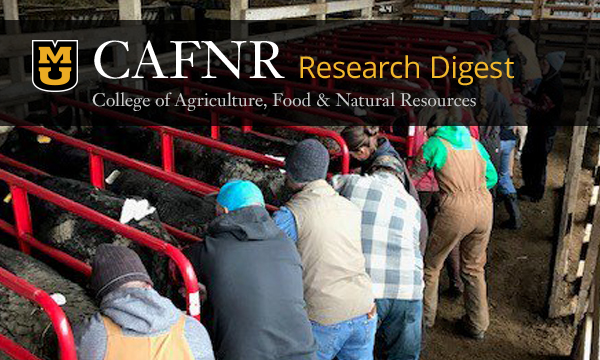|
Grad student Tyler McCubbin named Ambassador for the American Society of Plant Biologists
Tyler McCubbin, a doctoral candidate in the Division of Plant Sciences co-advised by Bob Sharp and David Braun, has been appointed as one of 17 new Ambassadors (from six countries) for the American Society of Plant Biologists (ASPB).
ASPB Ambassadors are early career scientists (students and postdocs) and industry employees enlisted to communicate the mission and vision of the Society to other plant biologists and to the general public, and to help ensure the ongoing vitality of the Society. These young leaders engage their campus communities in outreach activities, represent ASPB at section conferences, and contribute articles to the ASPB News. They also provide a voice for early career members in the Society.
CAFNR faculty members have received the following recent grants (listed by Principal Investigator):
Ivan Baxter, Graduate Student Support for Lauren Whitt, 1/1/19 – 12/31/23, $170,515, Donald Danforth Plant Sciences Center
Benjamin O. Knapp, National Atmospheric Deposition Program, 3/7/16 – 3/6/20, $7,547, USGS
William A. McKelvey Jr., Supporting Beginning Farmers in Scaling-up Into Wholesale Production, 9/1/18 – 8/31/21, $41,731, West Central Missouri Community Action Agency
Rebecca North, Statewide Lakes Assessment Project, 4/1/19 – 3/31/20, $4,845, Missouri Department of Natural Resources
Randall S. Prather, Gene Therapy for Cystic Fibrosis Lung Disease, 6/1/18 – 5/31/19, $75,770, University of Iowa
Randall S. Prather, Origins of Cystic Fibrosis Airway Disease, 9/5/18 – 6/30/19, $147,865, University of Iowa
Thomas Spencer, Physiological and Genetic Insights into Pregnancy Loss, 1/1/19 – 12/31/2023, $1,625,000, National Institute of Food and Agriculture
Michael C. Stambaugh, Integrating Ozark Highlands ecological classification, mapping, and historical ecology, 3/7/19 – 3/30/20, $52,470, U.S. Forest Service
Jinglu Tan, Acquisition of Goods and Service, 4/1/18 – 3/31/19, $55,529, Agricultural Research Service
Mitchell Weegman, Quantifying individual decision-making in space and time to link habitat conservation and management at the continent-scale for long-distance migrant shorebirds, 1/1/18 – 12/31/20, $18,241, USGS
|
